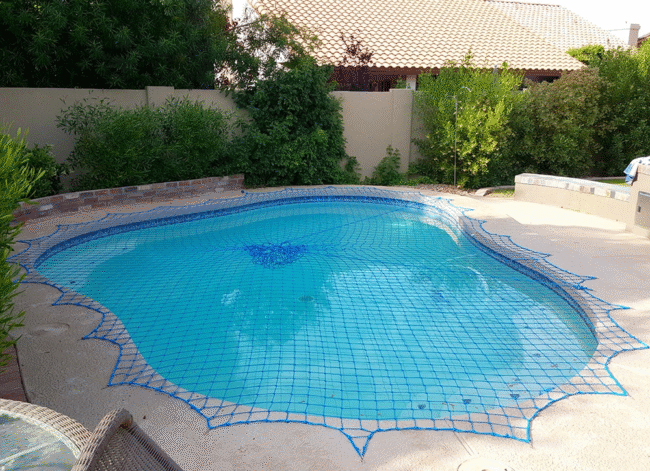
Pools provide comfort and recreation, but they also come with the responsibility to ensure safety at all times. Many households overlook simple solutions that could dramatically reduce risk and improve overall pool care. A pool cover, when selected and used correctly, becomes more than a seasonal accessory. It functions as a protective barrier and a tool for cleaner, more manageable maintenance. Recent improvements in cover design have expanded their role from convenience to critical safety equipment. Homeowners who understand these benefits can make smarter choices that protect their investment and their families.
Understanding how pool covers function throughout the year can help prevent accidents and preserve water quality. These covers are designed not only to shield the surface but also to deter unauthorized access when the pool is not in use. Weather resistance, anchoring strength, and drainage performance all affect how well a cover performs. By choosing a cover that aligns with specific environmental and lifestyle needs, owners gain long-term value. With so many options available, it’s essential to recognize which features support both security and efficiency. This article explores what makes a pool cover effective and why it remains one of the most practical safety measures available.
Benefits of Proper Inground Coverage
The way a pool is covered affects everything from cleanliness to safety. When fitted correctly, the cover forms a reliable surface that reduces access to the water and keeps out wind-blown debris. This added layer of protection works especially well for households with small children, pets, or frequent visitors. Proper coverage also helps control temperature and water loss, making the pool easier to maintain year-round. When installed over a well-prepared base, it stays secure through a range of weather conditions. These benefits make it clear that a well-selected cover is more than a seasonal purchase.
A good example of this protection can be seen in inground pool covers, which offer a tailored solution that matches the shape and slope of the swimming area. Unlike universal or loose covers, they are built to match specific dimensions and surfaces. This tighter fit keeps the area secure and minimizes exposure to sunlight and contaminants. It also reduces the effort required to clean or balance the pool’s chemistry once the cover is removed. As a result, homeowners enjoy easier transitions between seasons. They also gain peace of mind knowing that the pool remains safer even when unsupervised.
Features That Enhance Pool Safety
A strong safety strategy includes physical barriers that prevent accidents before they happen. Covers play a key role in this plan by making it harder for someone to fall or step into the pool without supervision. While fences and alarms can alert or block access, covers serve as a final line of defense. When reinforced with strong materials and secure fasteners, they become even more dependable. These qualities are especially useful in colder climates or during long periods of non-use. They keep the pool protected while also reducing exposure to potentially harmful debris.
Specifically, pool safety covers are built to remain in place even under pressure from weight or weather. These covers are constructed to hold firm during storms, snowfall, or unexpected contact from people or animals. Their resistance comes not just from the material but also from the way they’re anchored into the surrounding surface. Because they are meant to stay in place for extended periods, their construction must support both durability and convenience. These covers often allow some water to drain while still keeping larger debris out. That balance of strength and usability makes them ideal for both seasonal and long-term protection.
Mesh Design for Better Durability
Some homeowners prioritize ease of use alongside safety, especially if they handle pool care without professional help. For them, lightweight yet strong materials offer the best combination of function and convenience. Mesh designs are particularly useful because they are easier to remove, clean, and store when not in use. These covers allow water to pass through, which means they don’t require constant draining or extra support during rainfall. That alone saves time and reduces the chance of sagging or pooling on the surface. It also helps prevent mold or mildew that could form under a solid layer.
An extreme mesh pool cover offers these advantages while still holding up under pressure from snow or falling debris. This style is designed with tightly woven fabric that filters particles and provides enough support to prevent unwanted entry. The mesh blocks sunlight that contributes to algae growth, reducing chemical use throughout the closed season. Its breathable design maintains better water quality and cuts down on reopening tasks in the spring. Although lightweight, it is reinforced to last across many seasons. This makes it a smart option for those who want safety without added effort.
Planning for Seasonal Performance
Changing weather can put stress on pool infrastructure, and covers are often the first layer of defense. They must withstand everything from high winds to heavy snow without losing form or detaching from their anchors. That’s why choosing a cover that fits your climate is just as important as fitting your pool. Areas with harsh winters may require tighter reinforcement and stronger material, while warmer regions might benefit more from UV resistance and heat retention. Adjusting to these environmental demands helps ensure the pool remains usable and safe for years to come. Reliable covers reduce the chances of unexpected damage during off-seasons.
Seasonal use also affects how easily a cover can be removed or stored. Some owners may prefer retractable options that can be operated without tools, while others prioritize heavy-duty designs for longer closures. Flexibility matters when balancing safety with comfort. Planning ahead by inspecting or upgrading your cover before seasonal shifts will often reduce repair costs and protect the underlying structure. When matched correctly to its environment, a cover can offer consistent performance from year to year. This planning process is essential for anyone managing a pool in varying conditions.
Materials and Lifespan Comparison
Not all pool covers are built with the same goals in mind. Some prioritize strength and weight-bearing capacity, while others focus on lightness and ease of handling. Solid vinyl models block all sunlight but can collect water, requiring pumps or drains to manage surface buildup. Mesh versions allow water through but still catch leaves and dirt. Hybrid types blend these features to reduce weaknesses while increasing versatility. Pool owners need to assess which qualities matter most in their day-to-day use.
The expected lifespan of a cover depends largely on how well it’s maintained. Covers that are cleaned and stored properly can last several seasons without issue. Signs of aging include frayed edges, worn anchors, or fading due to UV exposure. Taking the time to patch small problems early can extend a cover’s usability by years. The initial investment may seem high, but long-term savings often follow from fewer replacements and better water quality. Careful selection and consistent upkeep keep covers working their best for longer.
Environmentally Minded Pool Care
Pool maintenance is often resource-intensive, but smart equipment choices can reduce that burden. Covers are a primary example, as they prevent water evaporation and help retain heat during cooler nights. This not only saves water but also cuts energy costs tied to heating and circulation. Blocking sunlight also reduces the rate at which chemicals break down, helping preserve water balance. Fewer chemicals mean less runoff and less impact on nearby plants or storm drains. Each of these effects supports a more eco-friendly pool care routine.
Eco-conscious buyers may also consider the materials used in the cover itself. Some are made from recyclable fabrics or offer replaceable parts that limit waste. Others come from companies that provide recycling programs or take-back options when the cover reaches the end of its life. These small decisions contribute to more sustainable practices. As consumers grow more aware of environmental impact, these features can guide their purchasing decisions. Investing in a durable, low-impact cover helps both the pool and the planet.
Wrap Up
Pool safety involves more than fences and supervision. A well-chosen cover helps prevent accidents while supporting easier maintenance. When it fits properly and holds up across seasons, the cover becomes a dependable layer of protection. Its strength and function reduce the risk of injury and simplify pool upkeep. Each design element, from anchoring to material, plays a role in how well it performs. With the right choice, homeowners can feel more confident in their pool safety efforts.
Caring for the cover through regular cleaning and storage keeps it effective over time. Even small tasks like checking tension or patching worn areas help preserve its durability. These efforts reduce waste, lower costs, and limit environmental impact. A good cover also keeps water cleaner and more balanced, easing the workload on other systems. Choosing wisely at the start leads to fewer problems down the road. A smart cover is one of the best ways to protect both the pool and those who enjoy it.
